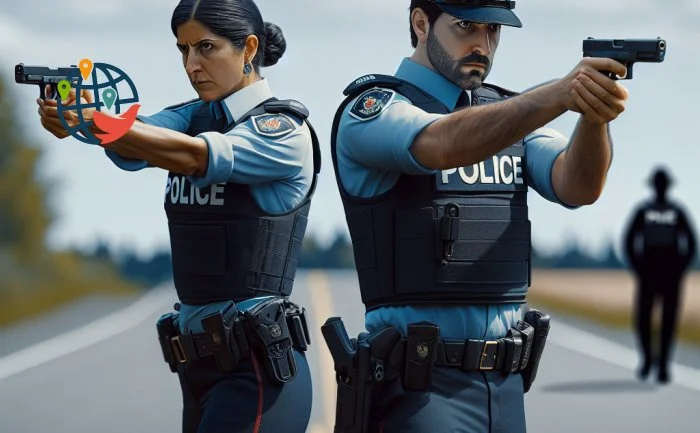The rate of police violence in 2023 has decreased

Journalists have tallied the death toll across Canada and by province.
Canadian journalists have calculated the number of people shot by police officers in Canada for the year 2023 from police reports and other public data. A total of 85 people were hurt because of the weapons of law enforcement officers from January 1 to December 15, including 41 deaths. In 2022, the data was sadder: 90 injured, of whom 50 were fatally wounded.
Police shootings in Canada remain rare compared to many other countries, but year after year, police officers are having more and more encounters with people with guns.
Why is this happening?
Criminologists say police officers need more training and restraint. But leaders of a union that advocates for law enforcement officers say police are forced to be on the front lines of Canada's mental health crisis and face increasingly dangerous situations. National Police Federation president Brian Sauve commented:
"No cop that I have ever dealt with wants to go down this road."
The union also insists that such situations also negatively affect the psychological state of the shooters themselves.
Distribution by province
Incidents of police-involved shootings are not evenly distributed across the country. Alberta remains the clear leader. In 2023, it accounted for 21 out of 85 cases. That's 0.45 cases per 100,000 population. For Alberta itself, that's a significant increase — up 90% since 2020.
There were 28 police shootings in Ontario, a rate of 0.18 per 100,000 people. A year earlier, the number was also significantly lower at 21.
There were 9 police shootings in Quebec and 6 across Atlantic Canada (that's New Brunswick, Prince Edward Island, Newfoundland and Labrador and Nova Scotia). While this result is much better than Alberta's, it's still an increase from 2022, when there were 2 such cases per 4 provinces.
British Columbia is not doing so well, with 17 police shootings in that region. On the positive side, however, unlike the provinces mentioned before, the rate is declining here. A year earlier, 24 people were injured by firearms in the hands of police officers.
In two other provinces, journalists noted declines in Saskatchewan and Manitoba.
Who the victims were
Most of those shot were young men, and people of color, including indigenous people, were also more common among the victims.
The police calls that resulted in a shooting were for weapons, stolen vehicles, or dangerous driving. Only 6 out of 85 911-callers reported an active shooter situation.
However, in almost 70% of cases, the victim had a weapon. In 30 out of 85 cases, the weapon was a firearm, and in another 20 cases, a knife or other edged weapon.
Three police officers were also killed in shootings in 2023 (2 of them in Edmonton) and another officer was shot.
The root of the problem and its solution
Union officials say employees often have to make a split-second decision. Six of the shootings started with a disturbance call, and another six started as health checks. Because of pressure on overburdened social programs, police officers must also travel to such checks related to mental health and homelessness. In these situations, an attack on officers is unexpected and provokes a violent response.
The union favors funding for appropriate agencies that would take those duties away from the police, mental health care for officers, and access to less lethal weapons and better technology for police.





























